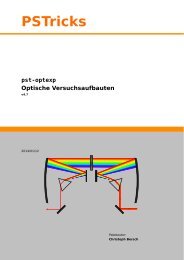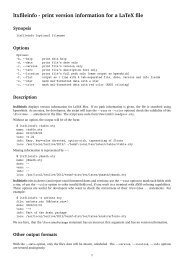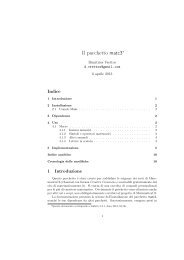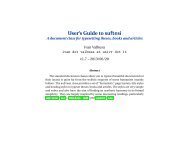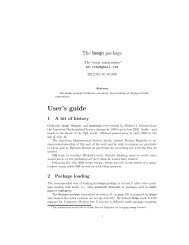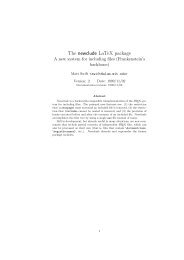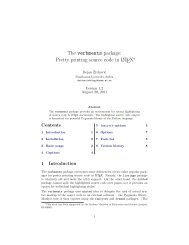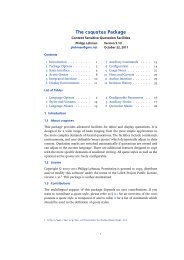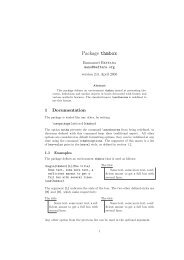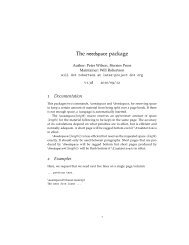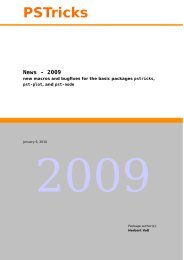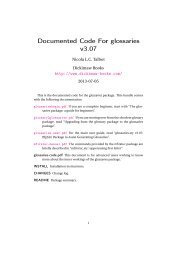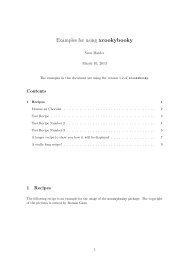Create successful ePaper yourself
Turn your PDF publications into a flip-book with our unique Google optimized e-Paper software.
Similar situations happen in LuaTEX regularly. A few of the more obvious problematic cases are dealt<br />
with: the attributes for nodes that are created during hyphenation, kerning and ligaturing borrow their<br />
attributes from their surrounding glyphs, and it is possible to influence box attributes directly.<br />
When you assemble a box in a register, the attributes of the nodes contained in the box are unchanged<br />
when such a box is placed, unboxed, or copied. In this respect attributes act the same as characters that<br />
have been converted to references to glyphs in fonts. For instance, when you use attributes to implement<br />
color support, each node carries information about its eventual color. In that case, unless you implement<br />
mechanisms that deal with it, applying a color to already boxed material will have no effect. Keep in<br />
mind that this incompatibility is mostly due to the fact that separate specials and literals are a more<br />
unnatural approach to colors than attributes.<br />
It is possible to fine-tune the list of attributes that are applied to a hbox, vbox or vtop by the use of<br />
the keyword attr. An example:<br />
\attribute2=5<br />
\setbox0=\hbox {Hello}<br />
\setbox2=\hbox attr1=12 attr2=-"7FFFFFFF{Hello}<br />
This will set the attribute list of box 2 to 1 = 12, and the attributes of box 0 will be 2 = 5. As you can<br />
see, assigning the maximum negative value causes an attribute to be ignored.<br />
The attr keyword(s) should come before a to or spread, if that is also specified.<br />
2.6 LUA related primitives<br />
In order to merge Lua code with TEX input, a few new primitives are needed.<br />
2.6.1 \directlua<br />
The primitive \directlua is used to execute Lua code immediately. The syntax is<br />
\directlua 〈general text〉<br />
\directlua name 〈general text〉 〈general text〉<br />
\directlua 〈16-bit number〉 〈general text〉<br />
The last 〈general text〉 is expanded fully, and then fed into the Lua interpreter. After reading and<br />
expansion has been applied to the 〈general text〉, the resulting token list is converted to a string as if<br />
it was displayed using \the\toks. On the Lua side, each \directlua block is treated as a separate<br />
chunk. In such a chunk you can use the local directive to keep your variables from interfering with<br />
those used by the macro package.<br />
The conversion to and from a token list means that you normally can not use Lua line comments (starting<br />
with --) within the argument. As there typically will be only one ‘line' the first line comment will run<br />
on until the end of the input. You will either need to use TEX-style line comments (starting with %), or<br />
change the TEX category codes locally. Another possibility is to say:<br />
16<br />
Basic TEX enhancements



